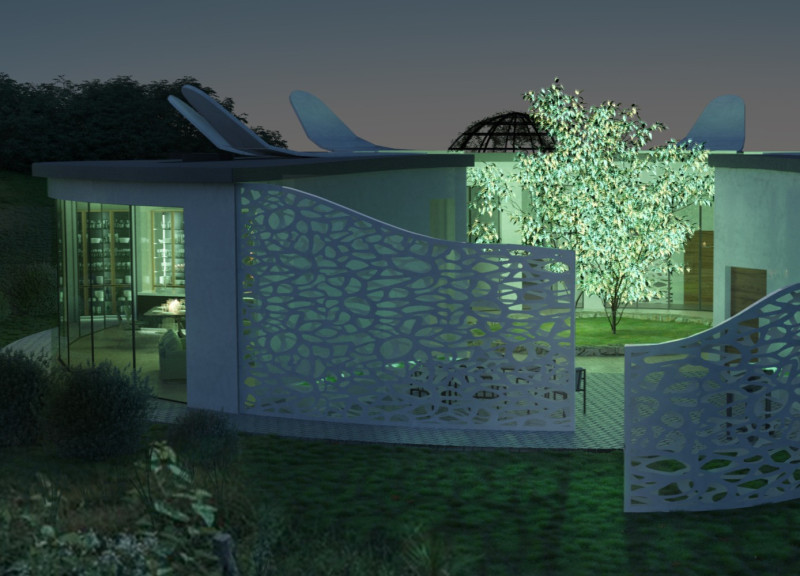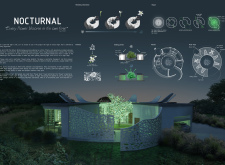5 key facts about this project
The project "Nocturnal" represents an innovative intersection of architecture and ecology, focusing on the night-blooming characteristics of certain flora. This design emphasizes the dynamic relationship between the built environment and its natural surroundings. Through careful planning and integration of sustainable practices, the project aims to create spaces that enhance human interaction with nature, emphasizing adaptability and environmental sensitivity.
The function of this architectural design revolves around creating a multi-purpose space that harmonizes living areas with ecological elements. The design encourages the exploration of natural light and ventilation while providing an adaptable environment for various activities. The layout enables intuitive movement and interaction with both indoor and outdoor elements, promoting a sense of tranquility and connection to the landscape.
The organic shape of "Nocturnal" is a key feature, drawing inspiration from the unfurling petals of nocturnal flowers. This design choice supports natural lighting, minimizing reliance on artificial illumination. The building incorporates key structural elements, such as glass, concrete, and perforated metal panels. The use of glass enhances transparency and creates a seamless connection between the interior and exterior, while concrete provides structural integrity. Perforated metal panels create a distinctive façade that facilitates natural light filtration while ensuring privacy.
The sliding, petal-like structures integrated within the design exemplify a unique approach to architectural dynamics. These elements allow for flexible interaction with the environment, adapting to changes in weather and enhancing natural ventilation. This feature underscores the project’s commitment to blending architecture with natural processes.
The surrounding landscaping is another significant aspect, utilizing native plant species to encourage local biodiversity. This landscape design integrates a central illuminated tree, serving as both a focal element and a representation of the project’s ecological philosophy. The interplay between the structural design and landscaping fosters an immersive experience that emphasizes the importance of ecological balance.
Unique to this project is its emphasis on nocturnal themes, reflecting an understanding of natural cycles and their relevance to architectural design. The project adopts innovative materials and design methodologies to create a structure that is not only functional but also deeply connected to its environmental context.
To gain a deeper understanding of this project, readers are encouraged to explore the architectural plans, sections, and designs which reveal the comprehensive thought process behind this unique architectural endeavor, showcasing innovative ideas that enhance both environmental sustainability and aesthetic quality.























